
How to Use Adafruit ADXL326: Examples, Pinouts, and Specs
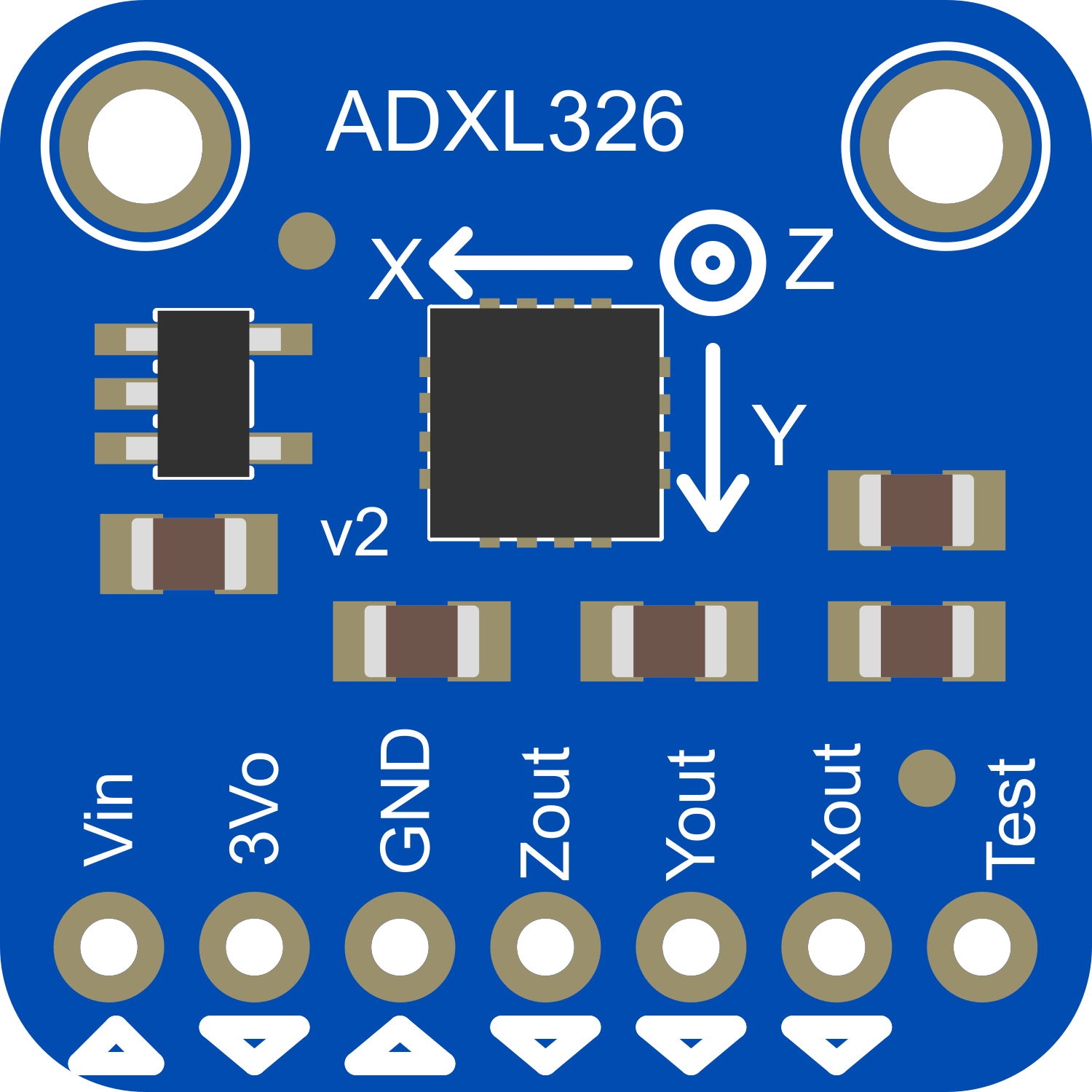
 Design with Adafruit ADXL326 in Cirkit Designer
Design with Adafruit ADXL326 in Cirkit DesignerIntroduction
The Adafruit ADXL326 is a small, thin, low-power, triple-axis accelerometer with signal conditioned voltage outputs. It is capable of measuring acceleration up to ±16 g. It is designed to measure the static acceleration of gravity in tilt-sensing applications, as well as dynamic acceleration resulting from motion, shock, or vibration. Common applications include:
- Motion detection (e.g., tap detection, free-fall detection)
- Orientation sensing (e.g., portrait/landscape detection)
- Vibration analysis in industrial applications
- Gaming and pointing devices
- Fitness and health monitoring devices
Explore Projects Built with Adafruit ADXL326
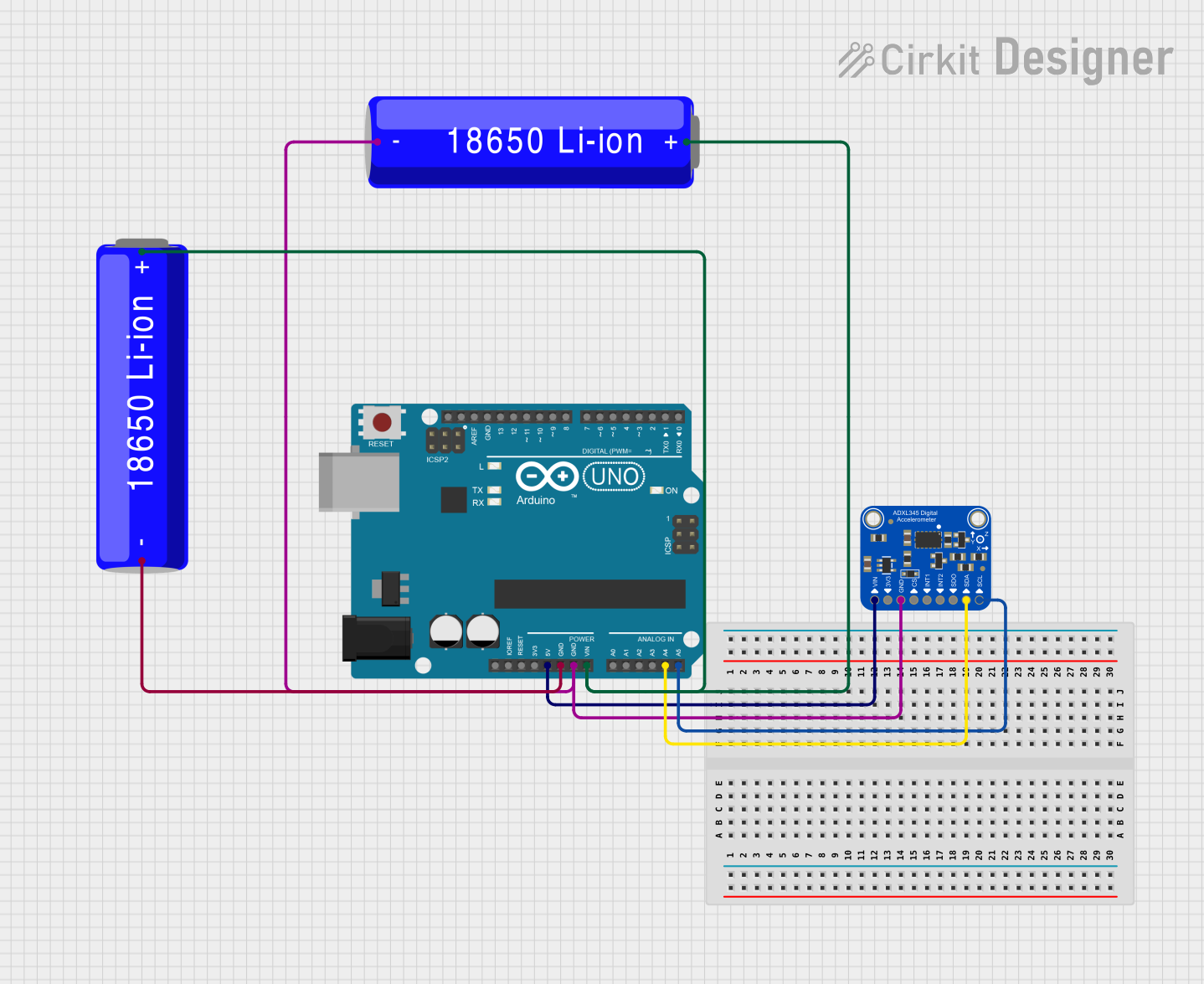
 Open Project in Cirkit Designer
Open Project in Cirkit Designer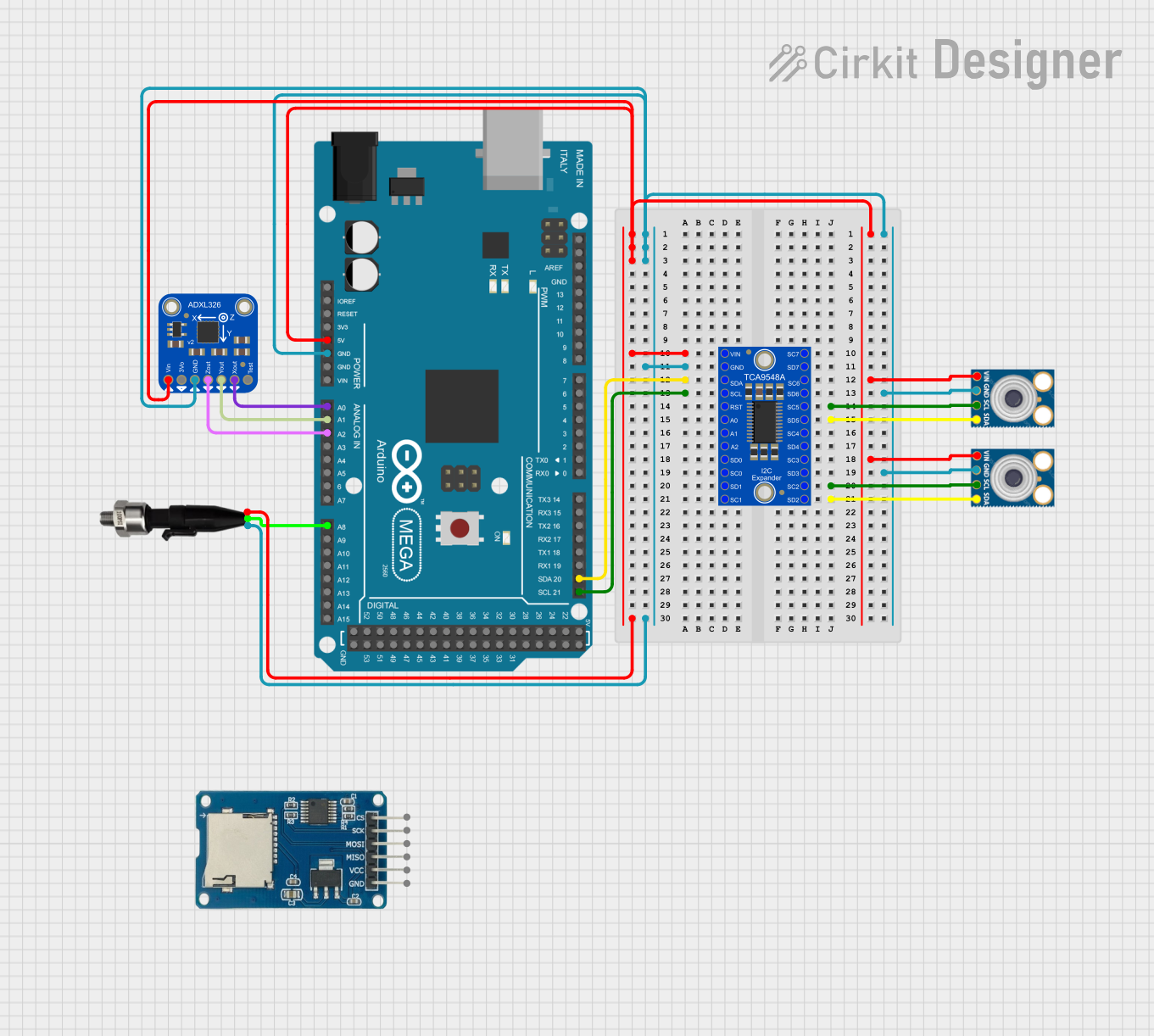
 Open Project in Cirkit Designer
Open Project in Cirkit Designer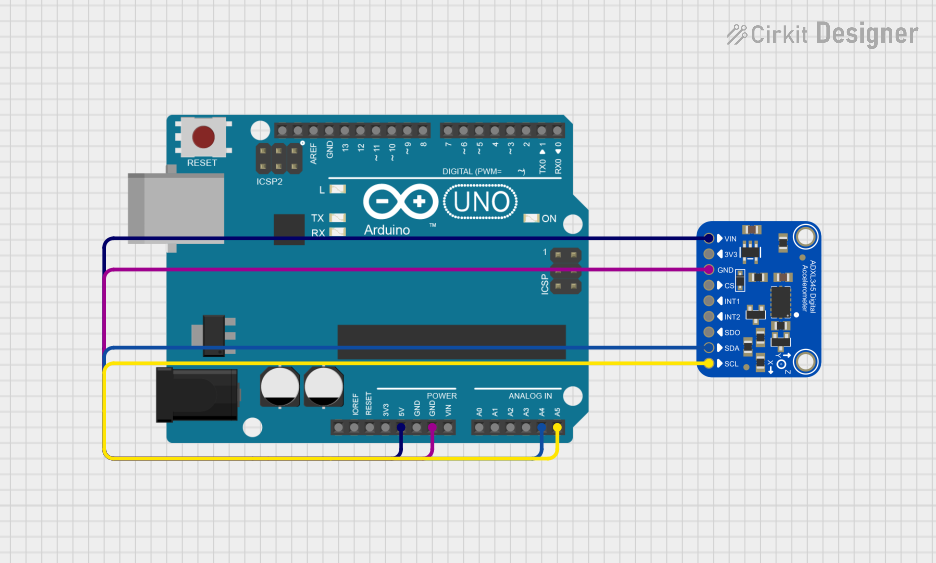
 Open Project in Cirkit Designer
Open Project in Cirkit Designer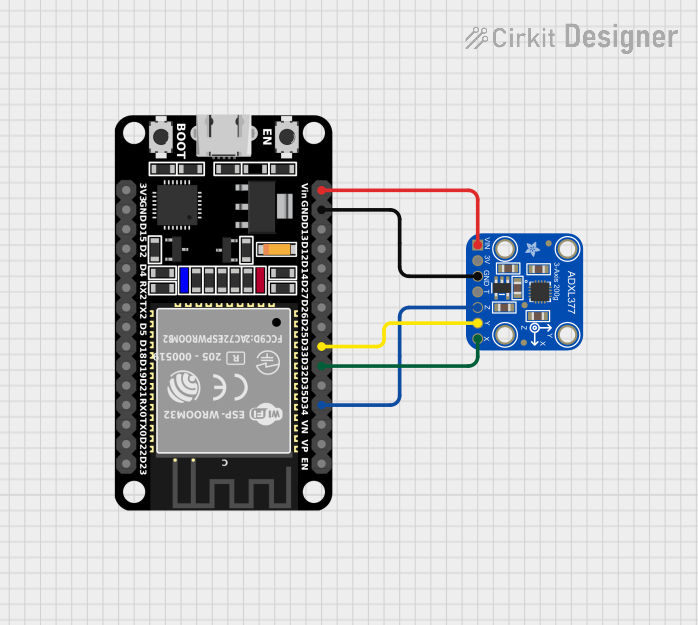
 Open Project in Cirkit Designer
Open Project in Cirkit DesignerExplore Projects Built with Adafruit ADXL326

 Open Project in Cirkit Designer
Open Project in Cirkit Designer
 Open Project in Cirkit Designer
Open Project in Cirkit Designer
 Open Project in Cirkit Designer
Open Project in Cirkit Designer
 Open Project in Cirkit Designer
Open Project in Cirkit DesignerTechnical Specifications
Key Technical Details
- Power Supply: 1.8V to 3.6V
- Sensitivity: 57 mV/g at 3.3V (typical)
- Measurement Range: ±16 g
- Bandwidth: Up to 1600 Hz
- Operating Temperature: -40°C to +85°C
- Low Power: 350 µA (typical)
Pin Configuration and Descriptions
| Pin Number | Name | Description |
|---|---|---|
| 1 | VCC | Power supply (1.8V to 3.6V) |
| 2 | GND | Ground connection |
| 3 | XOUT | Analog voltage output for X-axis |
| 4 | YOUT | Analog voltage output for Y-axis |
| 5 | ZOUT | Analog voltage output for Z-axis |
| 6 | ST | Self-test pin (leave unconnected if not used) |
Usage Instructions
Integration with a Circuit
To use the ADXL326 in a circuit:
- Connect VCC to a power supply between 1.8V and 3.6V.
- Connect GND to the ground of your system.
- Connect XOUT, YOUT, and ZOUT to analog inputs on your microcontroller, such as an Arduino UNO.
Best Practices
- Ensure that the power supply is stable and within the specified voltage range.
- Use decoupling capacitors close to the VCC and GND pins to minimize power supply noise.
- Avoid physical stress and overheating during soldering to prevent damage to the sensor.
- Calibrate the sensor in your application to account for any system-level inaccuracies.
Example Code for Arduino UNO
// Include the Arduino Wire library for I2C
#include <Wire.h>
// ADXL326 outputs are analog and need to be read using analog pins
const int xPin = A0;
const int yPin = A1;
const int zPin = A2;
void setup() {
// Initialize serial communication at 9600 baud rate
Serial.begin(9600);
}
void loop() {
// Read the analog values from the accelerometer
int xValue = analogRead(xPin);
int yValue = analogRead(yPin);
int zValue = analogRead(zPin);
// Convert the analog values to acceleration in g's
float xG = (xValue - 512) * (16.0 / 1024.0);
float yG = (yValue - 512) * (16.0 / 1024.0);
float zG = (zValue - 512) * (16.0 / 1024.0);
// Print the acceleration values to the serial monitor
Serial.print("X: ");
Serial.print(xG);
Serial.print("g, Y: ");
Serial.print(yG);
Serial.print("g, Z: ");
Serial.print(zG);
Serial.println("g");
// Delay before the next reading
delay(100);
}
Troubleshooting and FAQs
Common Issues
- Inaccurate Readings: Ensure that the accelerometer is properly calibrated and that the analog pins are correctly connected.
- No Output: Check the power supply and connections to the VCC and GND pins. Ensure that the board is not damaged.
- Intermittent Signals: Verify that there are no loose connections and that the solder joints are solid.
FAQs
Q: Can the ADXL326 be used with a 5V system? A: While the ADXL326 is rated for 1.8V to 3.6V, a logic level converter should be used when interfacing with a 5V system.
Q: How can I improve the accuracy of the sensor? A: Calibration is key. Perform a calibration routine at startup and consider implementing a filtering algorithm to smooth out the data.
Q: What is the purpose of the ST pin? A: The ST pin is used for self-testing the sensor. When activated, it can help verify that the sensor is functioning correctly.
Q: How do I interpret the analog output values? A: The output is proportional to the acceleration measured. You'll need to convert the analog readings to g's using the sensitivity factor provided in the technical specifications.
For further assistance, consult the Adafruit ADXL326 datasheet and additional resources provided by Adafruit.